One of the great aspects of chilies is their versatility. They can be used and preserved in many ways.
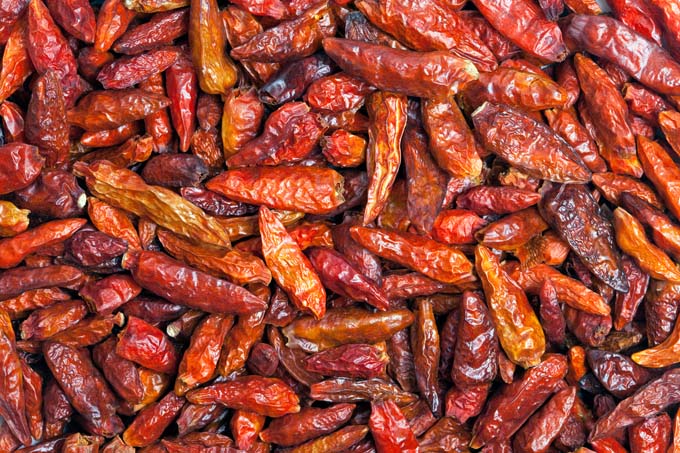
Before adding them to the rub for your next slow cooked pork roast, or mixed into a big dish of chicken chilaquiles, learn how to preserve them!
There are many methods for preserving the peppers that include everything from pickling to freezing.
But for the best long term preservation, dehydration is the preferred method. The following information provides tips and trick on how to dehydrate chili peppers, for maximum use and safe storage.
[the_ad_group id=”1077″]
Chili peppers can be dehydrated by hanging them outside, drying them slowly in a low-temperature oven, or in a food dehydrator.
However, using a food dehydrator is the best method for several reasons. Chilies that are hung outside will often not dehydrate evenly, especially in very humid climates, and they can be ruined by mold and mildew.
Although placing them in an oven at a low temperature will dry them, this method often tends to cook them instead, which can easily turn the flesh a dark color. A good electric food dehydrator will assure that the peppers are dried evenly, and that the flesh retains its natural color.
Before dehydrating the chili peppers, there are several things to keep in mind. First and foremost, handle them very carefully – especially the hotter varieties! Wash your hands often during handling, and never place your hands near your nose or eyes after cutting.
Pepper spray is made from the essence of hot chilies, and their natural juices can have the same effect on your nose, eyes, and throat.
Second, keep in mind that green chilies do not dehydrate well. They turn black instead, and rot easily during the drying process. The only good way to dry the green fruit is by using the pasado technique, which involves roasting on a grill and removing the flesh.
Before preparing the peppers for dehydration, sort through them and remove any with black spots, as these will usually become moldy or rot even after dehydration. Always wash the peppers thoroughly when you’re preparing them.
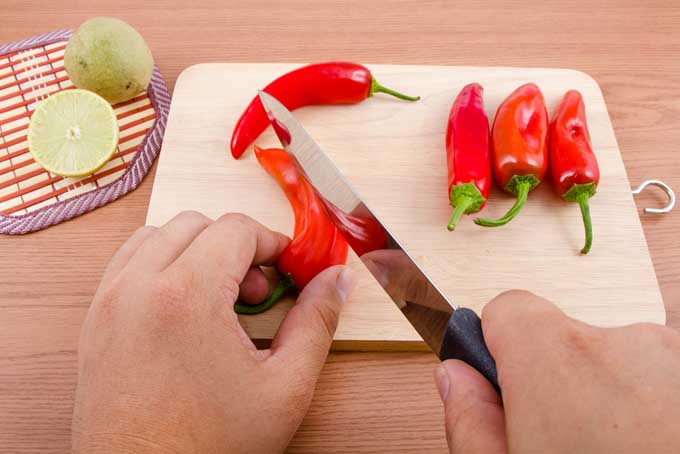
All chilies must be cut in half or cut into strips for proper dehydration. Leaving the stems, pith, and seeds in place is a matter of personal choice. Keeping the seeds will result in a hotter finished product.
Set the temperature on the dehydrator to between 113 and 122°F, and preheat for about ten minutes. Always place the peppers inside-up on the tray.
The length of drying time will vary based on many factors. These include the amount and type of chilies you are drying, external temperatures and humidity levels, the altitude of the area in which you live, and the power of the dehydrator.
Don’t worry that you will dry them too long. Dehydrating is a slow process. It normally takes at least eight hours for most varieties to dehydrate. You will know they are dried when they snap instead of bending with a rubbery feel.
You should be able to find more information on drying times and proper temperature settings in the instruction manual that came with your dehydrator.
After the chilies are dried, they are best stored in airtight containers, placed away from direct sunlight. Adding oxygen absorbers and dessicant packets can help to preserve them even longer.
It is important to keep dried peppers away from moisture and sunlight, as both of these elements can shorten shelf life. A good spice rack that’s built to keep these out, or that’s kept in a dark, cool drawer or cabinet can help. Check out Foodal’s review of the best models.
Unless you intend to freeze them, do not store dried peppers in plastic bags. Most of these will allow oxygen to pass through, which will break down the dried fruit very quickly, due to oxidation. Mylar is a better alternative, or try sealing them in Mason jars.
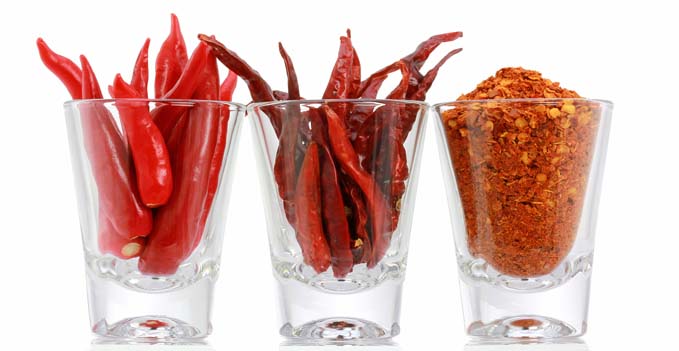
The dried peppers can be used whole, cut into smaller pieces, or ground into a powder using a spice grinder (NOT your good burr coffee grinder) or a food processor like one of these.
Again, a word of warning – if you grind them, be very careful when handling the powder, and make sure the grinder has a secure lid in place before grinding begins. It can be easy to burn your eyes or nose if mishandled – or to add too much spice to a meal.
For the hotter varieties, it is best to wear gloves when handling the powder.
To reconstitute dried chilies, soak them in hot water for at least ten minutes.
Share your favorite spicy chili recipes with us in the comments! And be sure to check out Foodal’s Utlimate Guide to Herbs and Spices for more tasty seasoning ideas.
About Lynne Jaques
Lynne is a stay-at-home mother of two boys. As a former US military officer and the spouse of an active duty US military member, Lynne enjoys traveling the world (although not the moving part!) and finding new cuisine and methods of preparing food. She also has the habit of using parenthesis way too much!

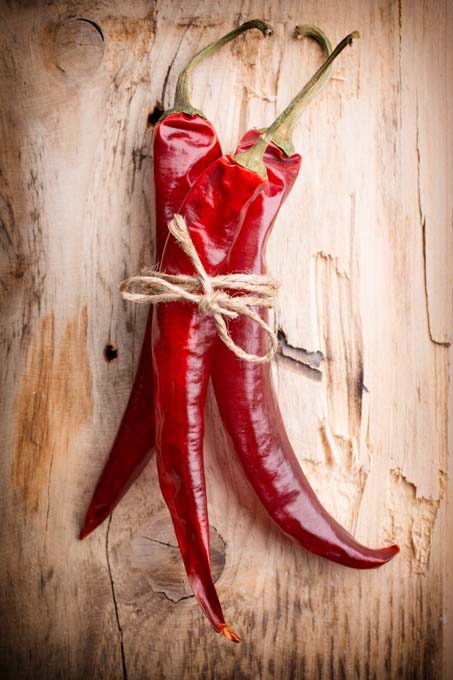
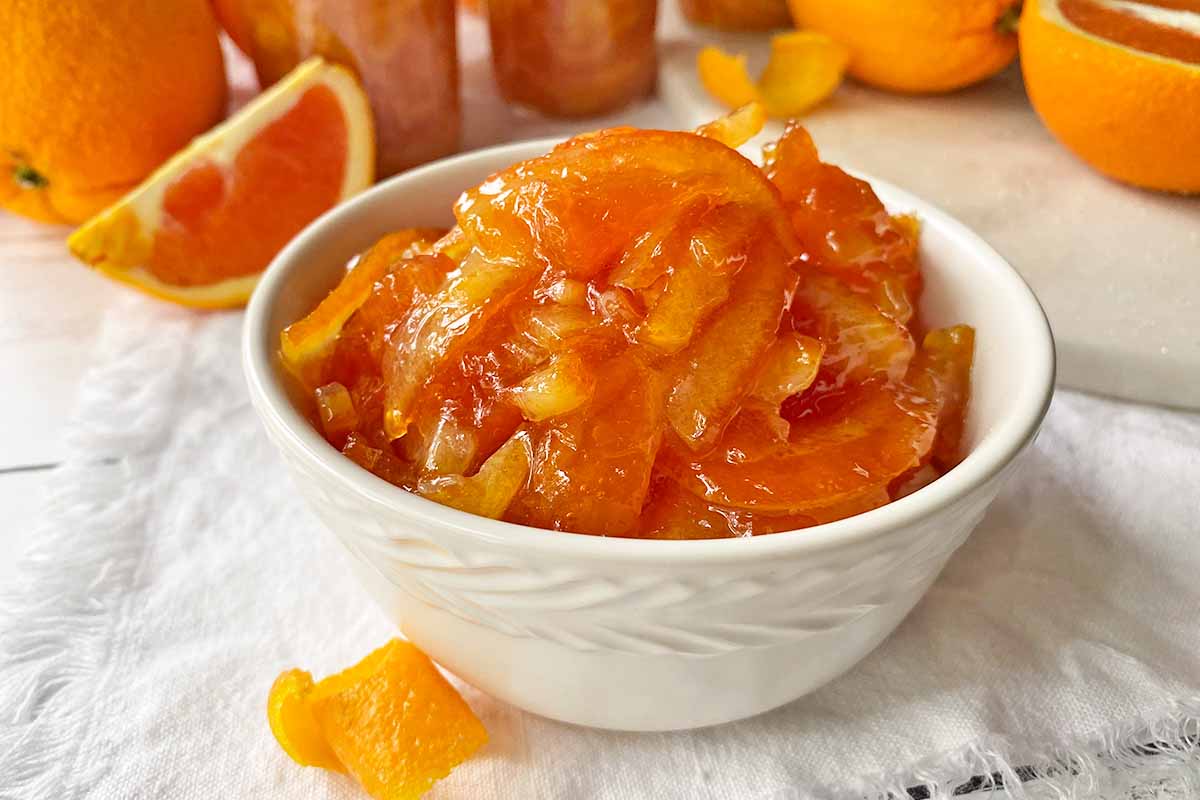
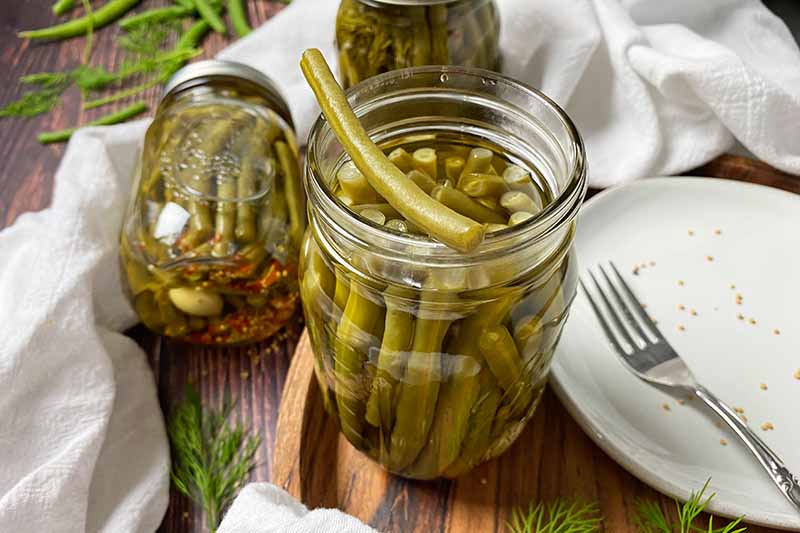

Well now I know what I had done wrong previously, I just tried to dry them out in the oven. Clearly I was cheating a little and this is why my chilies came out uneven and not properly dry in the middle.
Great article, thanks for the detailed guide.
Thanks for the article! My husband’s family enjoys spicy dishes and chili is a great condiment to add on them. I thought it would be hard to do so. I would definitely must give it a try!
After a faulty disaster with chillies in the kitchen, my own fault there, i quit using chillies altogether but at times i miss the extra taste and spicy-ness that was added to my meals…thanks to the article, i have learnt my mistakes and if i happen to dehydrate chillies in the near future…i know where to refer to.
I had no success with drying chillies in the oven either; they were very unevenly done, and some of them went moldy quite quickly. I’ve hung a few indoors in my kitchen, and some of those turned out well, but I still lost others. So, I’m glad that I’ve invested in a dehydrator because I always have a glut of chillies that I end up freezing or pickling. I sometimes make chilli pastes, jams and chutneys too, but I’ve always wanted my own dried ones so that I could grind them into a powder – it seemed silly to be growing hundreds of chillies and still buying chilli powder from the supermarket!
Thank you for the great tips for drying my chillies – I’ll be doing lots of these over the weekend.
I lived in New Mexico for a few months and I remember dry chilies being hung and displayed everywhere. It was pretty cool since I grew up around tropical peppers and we didn’t display them in this way. Anyway, thanks for the info! It’s coming at a great time because I want to start making New Mexican dishes. I wish I had experimented while I lived there. But I was young and more interested in other things.
Thank you for that great information and inspiration. I actually have a dehydrator sitting in storage because I have not done much dehydrating lately. Chilies are something I am strongly considering growing next year as they are one of those things that can give so much flavor with so little. I will definitely consider dehydrating my chilies as that is such a good way to preserve them without taking up too much space.
I make an excellent hot pepper spice blend. I slice the peppers/chilies on a slicer. About 1/8. Inch. I just slice from bottom up to stem. Dehydrate 130-140 degrees, rotating trays, for about 5 hours. I have 6 trays. I slice them all into slices like pickle chips. Small to large, all kinds. In 4 hours I will have 2 trays bell peppers, 2 of serrano. I dry dark green and sliced thin like I do, the colors are beautiful. Have fun.
Thanks for sharing, Valerie! This sounds like it would make a wonderful gift to share with friends and family as well.
No matter what kind of chilies I chose to dry, I’d have use gloves, even for the mildest of varieties. I don’t really cook with chilies enough to go through the process of drying them. But, as a crafter, I can see myself drying some chilies to use in some type of decoration. What kind of decoration? I don’t know, I’d have to scour the internet or YouTube for some ideas. Chilies are beautiful to look at.
Very interesting. I use chilies a lot — buy them frozen from the Chinese supermarket, but never thought of making my own chili flakes, always buy it in a package. I wonder if frozen chilies would dry as well? Anyway, I often don’t like the taste or smell of the dry chilies i buy. Just use them in spaghetti sauces and all, where they will give a lil’ kick but will end up overwhelmed by the other flavors.
I grow my own chillies and leave them out to dry naturally. I remember to turn them daily and although it takes a couple of weeks, I’ve never had any problems. Once dried, I’ll store some whole chillies on a jar but grind the rest into powder. I save so much money by doing this as I love to cook hot, spicy dishes, plus I find that the flavor is far superior.
I grow red chili’s in my garden and am excited to try preserving them in this manner when they are in their abundance! Generally I try to use them in recipe’s when they are ready, so this will be a great way to preserve and use year round.
I had a batch of fresh & dried chilies I was working with early on in my cooking career & decided to soak the dried in water. When reconstituted the dried (hydrated) chilies had a much more concentrated heat to them that I preferred so I’ve been doing that for-ev-er for stocks & broths.
I have never tried to dry chiles before, but I bet my husband would love it if I did. He loves the extra kick of flavor. I like a little, but I don’t like anything too hot.
This would be a nice way to add some zing to my cooking. I used to grow lots of peppers when I had a big garden. I miss that, but I usually end up with some still. We used to share out garden, and now people share with us, which is really nice.
I’d like to try doing this someday. I don’t have a dehydrator yet, and it’s too humid there, to hang them to dry, so I’ll probably hold off for a while. I had hoped to dehydrate some in the oven, but that doesn’t sound like the best idea. My favorite are green chilies, so I’m glad I read this before I ruined a batch of those. I guess I’ll have to grill them and preserve them that way.
Oh the heartburn! I like them but they don’t like me. It hurts just reading about them!
Thanks for these ideas!
One to add when using powder–you may want goggles as well! Or at the least, be sure to let the dust settle before handling it.
Thank you for this! I dried out some jalepeno peppers a few months back, but they didn’t get dry enough to be crispy. I just cut them into strips and put them out in the sun. They definitely shriveled and have stayed preserved well enough, but are a bit rubbery. Now that I’ve read this, I’m guessing it has to do with the humidity being very high here. Since I don’t have a food dehydrator, I might have to give the oven a shot next time and see if it does better than using the sun. I may also try cutting them into smaller pieces before I even start since I would chop them up later anyway to add to dishes.
I have often thought of getting a food dehydrator. This idea was mostly to help my oldest child when she had basketball practice..to keep her full and healthy by making my own jerky. What a great idea to make red pepper flakes by grinding the dehydrated peppers. Never thought about making these myself I use store brought flakes…but I’m trying to get myself into cooking more homemade items…like jellies and jams…even spices..how wonderful.
I think all of us have had that ´first´ experience with chilies. I never realized how often I must wipe my face or touch my face until I use them in the kitchen. As many other comments said, I also never had any luck drying them in the oven, for some reason they just do not dry evenly at all. I am lucky as where i live now, they are readily available at street vendors, so I never have to buy a lot all at one time, but even still knowing that a dehydrator works well is good knowledge, no more oven-drying.
Ahahaha, that’s so true! I always make the mistake of wiping my face (eyes! T_T) right after slicing chilies -dang, I never learn, do I?
Oh, so that’s how they make chili powder, interesting!
I live in México and chilies are essencial here for almost any food, and I remember to see all types of dehydrated chilies just hanging around my grandfather’s house, I never really knew how he used to do this process but this actually make sense now. We used to have more dehydrated chilies when it was winter and my granpa used to put a lot of them into a some kind of pan and he’ll just leave it outside for a couple of days, and after that he used to make the best salsas ever.
Thank you so much for sharing! 🙂
My aunt once bought a dried chili snack. I really loved it, too bad she bought it out of town, so it’s hard (and too much effort) to buy them. But with this, I’ll try to recreate that snack, hopefully I achieve the desired product~ Thank you for the technique~
I’m just wondering, as said in the post, pepper spray is made from their essence, is there any way I can extract a pepper/chili’s essence before dehydrating them? That way, I’ll hit two birds with one chili, oh, stone. 🙂
I use a lot of chillies in cooking and have dried them by hanging them before, but that’s not really very practical if you’ve got a large amount, as it can take ages – the dehydrator is definitely a much better and quicker option.
My grandma used to do this back in the days when she had a ton of chilies plants, however, she stopped doing it since all of the plants died thanks to one of my uncles who didn’t pay any attention to them. I definitely will have to copy down these tips in order to share them with my uncles, indeed. Thank you for sharing this.
It’s a very good thing I found your article. I was drying chili for the first time today–I did cut the black parts out just before finding this blog, but I didn’t cut down the middle nor know green ones don’t usually dry as well. So you just helped me save a small batch! Phew.
Glad to be of help ohmy!
Bird’s eye chilies… must I cut those little guys in half too? About to try this tomorrow as I’ve got a huge bush full. Thanks!!
Yes Marie, all pods should be either cut in half or strips for even drying, regardless of their size.
Do you need to put salt/garlic salt when dehydrating the green chili?
Birds eye and other thin-walled varieties like Chiltepin and even guajillo, cayenne, etc. do not need to be cut, or even destemmed for that matter. Know the comment is old but wanted to clarify for other readers.
I dehydrated some birdseye chillies yesterday. Washed them all and dried thoroughly then placed in dehydrator. Cut the stem off some and left stem on others. Not sure if left too long, as really dry, don’t bend and easily ground with a mortar and pestle.
Looked for article on how to store them and found this one. Off to buy a couple of mason jars. Making a meat and vegetable dish today, so will dry my recently dried chillies for the sauce.
Can the green chili be fire roasted before dehydration?